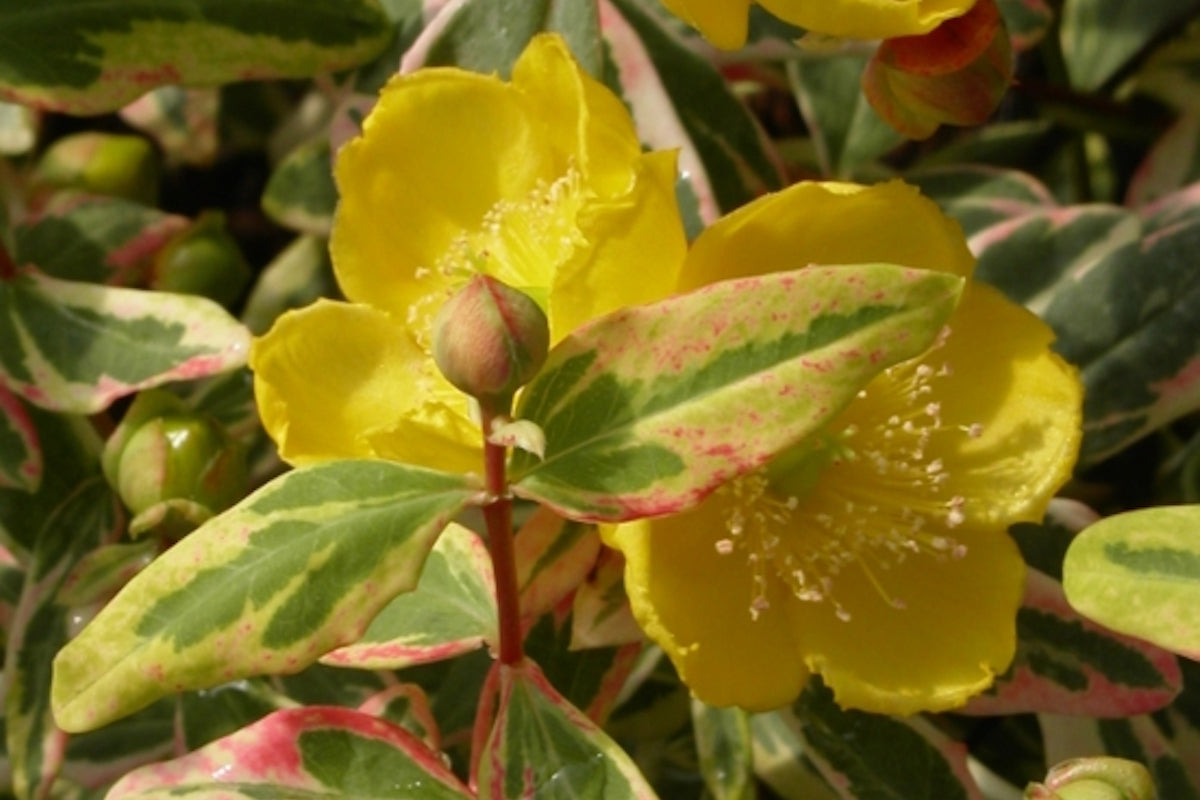Hypericum x moserianum 'Tricolor' (v)
Approx. 0.5 litre pot
About this cultivar:
Hypericum x moserianum 'Tricolor' (v) is a spreading shrub with red young stems bearing ovate leaves variegated with green, pink and cream, and cup-shaped yellow flowers wide in summer and early autumn. Great ground cover, not too rampant!
- Position: Full sun, partial shade
- Soil: Almost any soil, not water logged!
- Flowers: June, July, August, September
- Other features: Grows well in Ballyrobert
- Hardiness: H5 - Hardy in most places throughout the UK even in severe winters (-15 to -10°C), Fully hardy - grows well in Ballyrobert!
- Habit: Clump forming, bushy
- Foliage: Deciduous
- Height: 15 - 30 cm (0.5 - 1 ft)
- Spread: 15 - 60 cm (0.5 - 2 ft)
- Time to full growth: 2 to 5 years
- Plant type: Herbaceous Perennial, shrub
- Colour: Green, yellow
- Goes well with: -
About this genus:
Hypericum is a genus of flowering plants in the family Hypericaceae. The genus name comes from the Greek words ‘hyper’ meaning above and ‘eikon’ meaning picture in reference to the practice of hanging flowers from this genus above images, pictures, windows or heaths to ward of evil spirits. They were also gathered and burned to ward off evil spirits on the eve of St. John's Day, thus giving rise to the genus common name of St. John's wort. These days it is an economically important medicinal crop plant with demonstrated anti-viral, anti-depressive and anti-cancer properties.
It is one of the 100 largest genera of flowering plants- there are over 490 species described and it is difficult to generalise! Hypericum vary from herbaceous annual or perennials 5 cm tall to shrubs and small trees up to 12 m tall and have a nearly worldwide distribution, missing only from tropical lowlands, deserts and polar regions. A wide net indeed.
If you don’t have a DNA sample handy you can try and identify them by the opposite, simple oval, either deciduous or evergreen leaves or pale to dark yellow, 0.5–6 cm diameter, five petalled flowers. The fruit is usually a dry capsule which splits to release the numerous small seeds.
What does this mean for the gardener? Well… since it is hard to generalise – I won’t! See each plant on a case by case basis!








